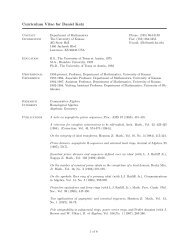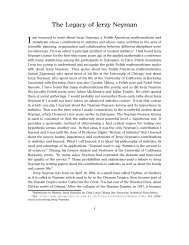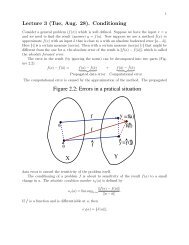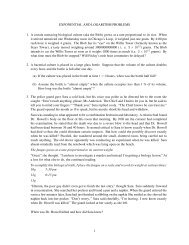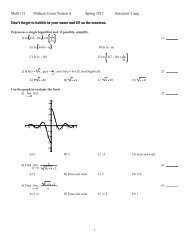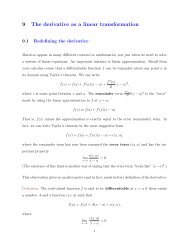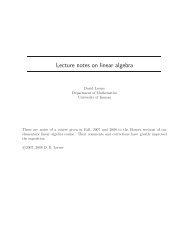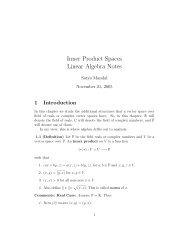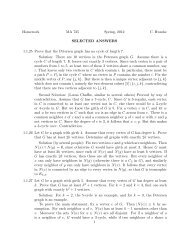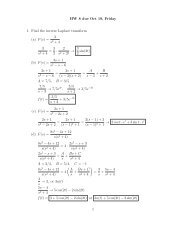Canonical Forms Linear Algebra Notes
Canonical Forms Linear Algebra Notes
Canonical Forms Linear Algebra Notes
Create successful ePaper yourself
Turn your PDF publications into a flip-book with our unique Google optimized e-Paper software.
Therefore, the matrix of T m is given by<br />
A m <br />
m λ1 Cm<br />
=<br />
0 Bm For some matrix Cm. Therefore, for a polynomial f(X) ∈ F[X] that<br />
matrix f(A) of f(T ) is given by<br />
<br />
f(λ1) C∗<br />
f(A) =<br />
.<br />
0 f(B)<br />
some matrix C∗. So, if f(X) ∈ ann(T ) then f(T ) = 0. Hence<br />
f(A) = 0. This implies f(B) = 0 and hence f(T1) = 0. So, ann(T ) ⊆<br />
ann(T1) and the claim is established.<br />
Therefore, p1 | p. So, p1 satisfies the hypothesis of the theorem.<br />
So, there is a an element e2 ∈ V1 such that T1(e2) = λ2e2 where<br />
(X − λ2) | p1 | p.<br />
Also follows that T (e2) = ae1 + λ2e2.<br />
Step-3 Write W2 = Span(e1, e2).<br />
Note that<br />
<br />
.<br />
1. e1, e2 are linearly independent and dim W2 = 2.<br />
2. W2 is invariant under T.<br />
3. Also<br />
<br />
λ1 a12<br />
(T (e1), T (e2)) = (e1, e2)<br />
0 λ2<br />
Step-4 If W2 = V (that is if 2 < n), the process will continue. We<br />
extend e1, e2 to a basis e1, e2, E3, . . . , En of V (Well, they are different<br />
Ei, not the same as in previous steps.) Write V2 = Span(E3, . . . , En).<br />
Note<br />
1. dim(V2) = n − 2<br />
2. V = W2 ⊕ V2.<br />
As in the previous steps, define T2 : V2 → V2as in the diagram<br />
(you should define explicitly):<br />
18<br />
<br />
.





